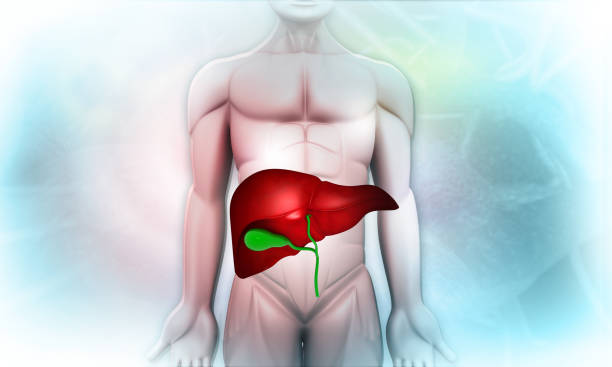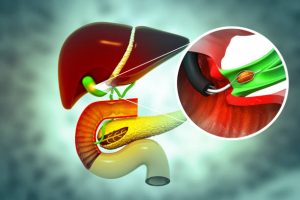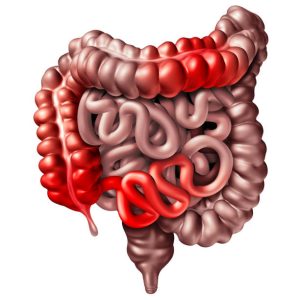
Human body with liver. 3d illustration
Cholestatic Liver Disease
What is Cholestatic Liver Disease?
Cholestatic liver disease refers to a condition where bile flow is impaired, leading to an accumulation of bile acids in the liver and bloodstream. This can result in liver damage and various symptoms, as bile is essential for digestion and the elimination of waste products.
Types of Cholestatic Liver Disease:
- Primary Biliary Cholangitis (PBC): An autoimmune disease that slowly destroys the bile ducts within the liver.
- Primary Sclerosing Cholangitis (PSC): A progressive disease characterized by inflammation and scarring of the bile ducts, often associated with inflammatory bowel disease (IBD).
- Cholestasis of Pregnancy: A liver condition that occurs during pregnancy, causing bile to accumulate.
- Drug-Induced Cholestasis: Certain medications can lead to cholestasis, causing liver dysfunction.
Main Causes of Cholestatic Liver Disease:
- Autoimmune Disorders: Conditions like PBC and PSC.
- Bile Duct Obstruction: Gallstones, tumors, or strictures that block bile flow.
- Infections: Certain viral infections (e.g., hepatitis) or parasitic infections can cause cholestasis.
- Medications: Some drugs can induce liver damage and cholestasis.
- Genetic Disorders: Conditions affecting bile acid synthesis or transport.
Signs and Symptoms of Cholestatic Liver Disease:
- Jaundice: Yellowing of the skin and eyes due to excess bilirubin.
- Itching (Pruritus): Often intense and can be debilitating, caused by bile salts in the bloodstream.
- Fatigue: Generalized tiredness and weakness.
- Dark Urine: Due to excess bilirubin being excreted.
- Pale Stools: Lighter-colored stools from lack of bile reaching the intestines.
- Abdominal Pain: Discomfort in the upper right abdomen.
Risk Factors for Cholestatic Liver Disease:
- Family History: Genetic predisposition can increase risk for autoimmune conditions.
- Age and Gender: PBC is more common in middle-aged women, while PSC often affects younger men.
- Other Autoimmune Diseases: Conditions such as rheumatoid arthritis or Sjögren’s syndrome may increase risk.
- IBD: A history of inflammatory bowel disease is associated with PSC.
How to Prevent Cholestatic Liver Disease:
- Avoid Alcohol Abuse: Limiting alcohol intake can reduce the risk of liver damage.
- Healthy Diet: A balanced diet may help maintain liver health.
- Regular Medical Check-ups: Monitoring liver function if at risk can aid in early detection and management.
- Vaccinations: Vaccinations against hepatitis A and B can prevent viral infections affecting the liver.
How Cholestatic Liver Disease is Diagnosed:
- Medical History and Physical Examination: Assessment of symptoms and risk factors.
- Blood Tests: Liver function tests (LFTs) to evaluate liver enzymes, bilirubin levels, and alkaline phosphatase.
- Imaging Studies: Ultrasound, CT, or MRI to visualize the liver and bile ducts for obstructions.
- Liver Biopsy: In some cases, a biopsy may be necessary to assess liver damage and confirm diagnosis.
Treatment for Cholestatic Liver Disease:
- Medications: Ursodeoxycholic acid (UDCA) is often used to improve bile flow and reduce symptoms, especially in PBC.
- Symptomatic Treatment: Antihistamines or other medications to manage itching and discomfort.
- Management of Complications: Treatment for associated conditions, such as managing gallstones or liver cirrhosis.
- Liver Transplant: In severe cases, particularly with PSC, liver transplant may be necessary.
Home Remedies for Cholestatic Liver Disease:
- Maintain a Healthy Diet: Focus on a diet rich in fruits, vegetables, whole grains, and lean proteins.
- Hydration: Drink plenty of fluids to help support liver function.
- Herbal Supplements: Milk thistle and dandelion root are sometimes used for liver health, but consult a healthcare provider first.
Ayurvedic Medicine for Cholestatic Liver Disease:
- Turmeric: Known for its anti-inflammatory properties, it may support liver health.
- Bhumyamalaki (Phyllanthus niruri): Traditionally used to support liver function and treat liver disorders.
- Triphala: A blend of three fruits that may promote digestive health and liver detoxification.
- Amla (Indian Gooseberry): Rich in antioxidants, it can support overall liver health.
Precautions:
- Regular monitoring of liver function is crucial if diagnosed with cholestatic liver disease.
- Avoid self-medicating without consulting a healthcare provider, especially regarding herbal supplements.
- Report any new symptoms or changes in condition to a healthcare provider promptly.
Self-Care Tips:
- Keep a symptom diary to track changes and identify triggers.
- Manage stress through mindfulness, yoga, or relaxation techniques.
- Engage in regular, moderate exercise to support overall health.
Conclusion:
Cholestatic liver disease encompasses a range of conditions that affect bile flow and liver function. Early diagnosis and appropriate management are crucial for improving outcomes and quality of life.
Disclaimer:
The information provided here is for educational purposes only and should not replace professional medical advice. Consult a healthcare provider for proper diagnosis and treatment.
Additional Tips:
- Stay informed about your condition and treatment options.
- Connect with support groups for individuals with liver disease for shared experiences and resources.
- Regularly review and adjust your treatment plan with your healthcare team based on symptom changes or new research.








